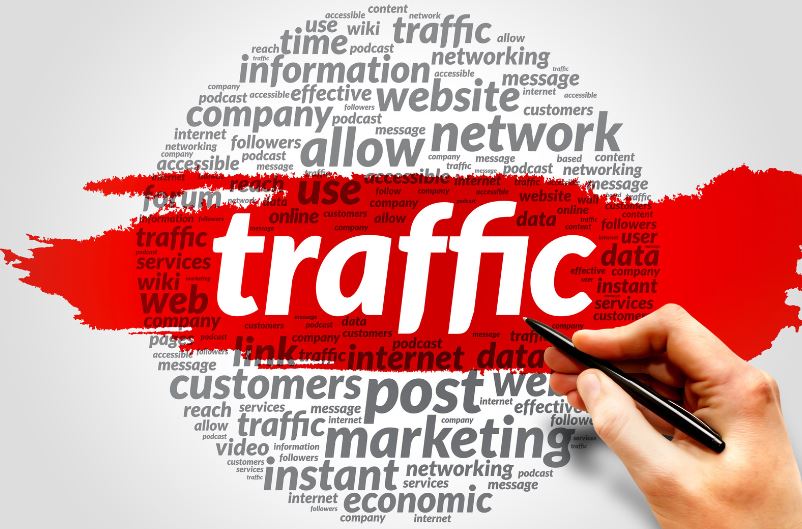Last Updated on
When we dive into the vast ocean of digital analytics amidst the waves of data and reefs of reports, a silent predator often lurks bot traffic. But fret not! Just as oceanographers have tools to study marine life, digital marketers can wield tools to exclude bot traffic from Google Analytics. Dive in with us.
Why Excluding Bot Traffic Matters
Bots, those automated scripts that wander the web, often show up uninvited in our analytics, muddying the waters. While they play an integral role in the digital ecosystem, their presence can distort metrics, leading to misguided strategies. Isn’t it essential then to get a clear, unobstructed view?

Distinguishing Genuine Users from Bots
Before we leap to exclusion, we need the ability to discern.
- Behavioral Patterns: Unlike humans, bots display repetitive, predictable behaviors. For instance, a bot might rapidly access several pages without a straightforward user journey.
- High Bounce Rates & Short Session Durations: An unusually high bounce rate combined with a fleeting session duration often signals bot activity. Real users typically linger, explore, and engage.
Harnessing Google Analytics to Combat Bot Traffic
Let’s venture into the nuts and bolts of Google Analytics (GA) and explore how to filter these pesky intruders.
Built-in Bot Filtering
GA offers a built-in feature that does the heavy lifting for you:
- Navigate to the Admin section.
- Under the View column, click on “View Settings.”
- Check the box “Exclude all hits from known bots and spiders.”
Voilà! Google uses its extensive database to eliminate the most common bots.
Custom Filters for Advanced Exclusion
While the built-in option is excellent, sometimes you need a sharper sword.
- Location-Based Filtering: If your business doesn’t cater to specific regions, exclude them. You’ll cut down not just bot traffic but also irrelevant human traffic.
- User Agent Filtering: Bots come with identifiable User Agents. Crafting a filter that targets these agents can significantly prune your data.
Third-Party Solutions: The Next Step
Google Analytics offers an arsenal, but third-party solutions often bring the big guns. Consider platforms like DataDome, which specializes in bot management and protection. They detect and adapt, ensuring that your metrics remain bot-free.
The Domino Effect of Unfiltered Data
Why go to such lengths? The ramifications of untreated bot traffic are manifold.
- Skewed Conversion Rates: Bots don’t buy. If they form a sizeable chunk of your traffic, they’ll dilute your conversion rates.
- Misallocated Marketing Budgets: Operating on incorrect data could lead you to pour money into ineffective campaigns.
- Distorted User Insights: Understanding genuine user behavior is pivotal. Bots create static, hindering the transparent transmission of user signals.
In Conclusion: A Cleaner Dataset Awaits
In this digital age, data is the lighthouse guiding ships towards success. The more precise the light, the more accurately it suggests. By excluding bot traffic from Google Analytics, you’re not just cleaning data but illuminating your path to digital success. Navigate with precision, and let no bots steer you off course.
FAQs
How do you identify bot traffic?
Identifying bot traffic can be challenging because bots can mimic human behavior to varying degrees. However, several methods and techniques can help you detect and mitigate bot traffic:
- User-Agent Analysis: Bots often use specific user agents that differ from those of regular web browsers. Analyzing the user agent strings in HTTP headers can help you identify known bot patterns.
- IP Address Analysis: Frequent requests from a single IP address or a range of IP addresses can indicate bot activity, especially if they exhibit suspicious behavior.
- Rate Limiting and Thresholds: Implement rate limiting on your server to restrict the requests a user (or IP) can make within a specific time frame. Unusually high request rates may indicate bot activity.
- CAPTCHA Challenges: Implement CAPTCHA challenges on forms or login pages to differentiate between humans and bots. CAPTCHAs are designed to be challenging for automated scripts.
- Behavior Analysis: Analyze user behavior patterns, such as mouse movements, keystrokes, and navigation paths. Bots follow predefined patterns and lack the randomness typical of human users.
- Session Tracking: Monitor session data to identify suspicious session IDs or tokens bots might generate.
- HTTP Request Analysis: Look for anomalies in HTTP requests, such as missing or incorrect headers, unusual content, or patterns inconsistent with normal user behavior.
- Browser Fingerprinting: Use techniques like browser fingerprinting to analyze the unique characteristics of a user’s browser and device. Bots may have consistent fingerprints that differ from humans.
- Machine Learning and AI: Employ machine learning models and AI algorithms to detect bot behavior patterns. These models can learn from historical data to identify deviations from regular traffic.
- Blocklists: Maintain and update blocklists of known malicious IP addresses, user agents, or patterns. Many security services and databases provide such lists.
- Challenge-Response Mechanisms: Implement challenge-response mechanisms where users need to solve puzzles or answer questions that are easy for humans but difficult for bots.
- Behavioral Biometrics: Utilize behavioral biometrics, such as the way a user types, scrolls, or moves a mouse, to distinguish between humans and bots.
- Human Interaction Tests: Conduct automated tests that require human interaction, like clicking on specific elements or solving puzzles. Bots often struggle with these tasks.
- Monitoring and Analysis Tools: Employ web traffic monitoring tools that provide real-time analytics and alerts for suspicious activities.
- Third-party Solutions: Consider using third-party services or solutions specializing in bot detection and mitigation, such as WAFs (Web Application Firewalls) or bot detection APIs.
Bot detection is an ongoing process, and it’s essential to continuously update your methods to stay ahead of evolving bot tactics. Combining multiple detection techniques and regularly analyzing your traffic data can help you effectively identify and mitigate bot traffic on your website or application.
Are traffic bots illegal?
The legality of traffic bots depends on their purpose and how they are used. In many cases, traffic bots are considered illegal or unethical when they engage in activities that violate laws, terms of service agreements, or the rights of others. Here are some common scenarios where traffic bots may be illegal:
- Click Fraud: Bots that click on online ads or affiliate links with the intent to generate revenue for the bot operator can be illegal. Click fraud is a form of fraud and can result in legal consequences.
- Impersonation: Bots that impersonate real users, engage in identity theft, or attempt to access someone else’s accounts or personal information can be illegal, as they often violate privacy and cybersecurity laws.
- DDoS Attacks: Bots used to carry out Distributed Denial of Service (DDoS) attacks, which flood a website or network with traffic to overwhelm and disrupt it, are illegal under most jurisdictions.
- Data Scraping: Bots that scrape websites for data without proper authorization can infringe on copyright laws and terms of service agreements. While web scraping is not always illegal, it can become unlawful without consent or violating website terms.
- Account Creation and Spam: Bots that create fake accounts on websites or social media platforms and engage in spamming, phishing, or spreading malware are generally considered illegal activities.
- Criminal Activity: Bots used for illegal purposes, such as hacking, phishing, fraud, or any other criminal activities, are unfair by definition.
However, not all traffic bots are inherently illegal. Some legitimate uses of bots include:
- Search Engine Crawlers: Search engines use bots to index websites and make them searchable. These bots are typically legal and beneficial for website owners.
- Performance Testing: Bots can be used for load testing and performance analysis of websites or applications to ensure they can handle real-world traffic.
- Chatbots and Customer Support: Bots used for customer support and automated messaging systems are widely accepted and not considered illegal.
- Monitoring and Analytics: Bots can monitor website performance, collect analytics data, and generate reports.
It’s essential to differentiate between legitimate and malicious uses of traffic bots. Engaging in illegal bot activities can result in legal consequences, including fines and criminal charges. Website owners often take measures to detect and block malicious bots to protect their platforms and users. If you plan to use bots for any purpose, you must ensure that your activities comply with relevant laws and regulations and adhere to the terms of service of the websites you interact with.




